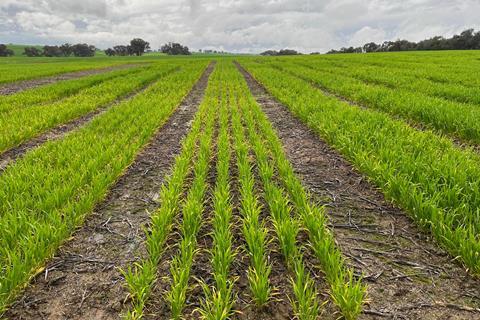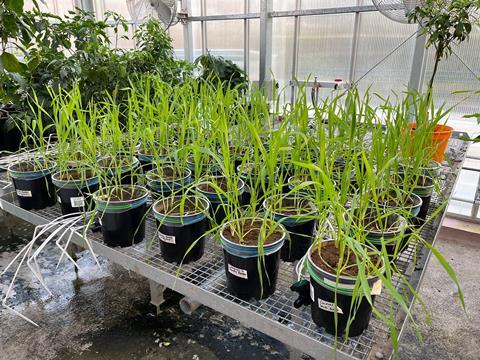With global populations looking likely to top 10 billion by the year 2050, the practices that we use to grow food need to adapt in kind - and what better way is there but to harness the innate power of microbes!
There’s a lot we don’t know about how our everyday practices affect the abilities of other organisms to go about their usual behaviours and key ecosystem services.
Of course, there are obvious examples of how human activities have led to mass extinction events and accelerated global warming, but what might not be as obvious is how we’re affecting microbial communities. It’s easy to forget about them, given that we can’t see them, but they play crucial roles in the cycling of all sorts of key nutrients that are required for life. And unsurprisingly, just like us, they are also affected by a steadily warming climate and our damaging environmental practices.
Promoted: AMI has teamed up with QIAGEN to help you get the highest yields from your soil DNA Extractions. Get your free guide here.

Agricultural systems are no doubt key to providing sufficient food for a growing population, particularly due to the finite nature of arable land, and how we manage the biological aspects of these ecosystems is becoming increasingly critical. For more sustainable methods of improving crop yields, we must first consider the key nutrient cycling processes performed by soil microorganisms and how our agricultural practices affect them. While a lot is known about how soil microorganisms in agroecosystems affect the cycling of carbon, nitrogen, phosphorus and sulphur, comparably less is known about trace gases such as hydrogen.
Critical process
In a perspectives paper recently published in Microbial Biotechnology by Dr Zahra Islam (University of Melbourne), Professor Chris Greening (Monash University) and Dr Hangwei Hu (University of Melbourne), we highlight the need to understand not only how critical the biogeochemical process of hydrogen cycling occurring in agroecosystems is, but also how it is affected by agricultural management practices.
Only since 2007 has the process of hydrogen cycling in soil environments been attributed to bacteria that have enzymes called hydrogenases. These highly specialised proteins can enable some bacteria to consume hydrogen directly from the atmosphere for their own benefit, typically fuelling either enhanced growth or long-term survival.

This process has been found in a whole range of ecosystems to date including geothermal springs, wastewater treatment plants, Antarctica and most recently, in the ocean, with modelling suggesting that environmental bacteria consume a whopping 70 million tonnes of H2 from the atmosphere per year. So with so many different ecosystems capable of consuming hydrogen, why do we need to care about agricultural soils?
Hotspot of hydrogen production
Agricultural soils in particular have been shown to be a hotspot of hydrogen production, primarily due in part to hydrogen being produced as a by-product of nitrogen fixation (the conversion of atmospheric N2 into plant-usable forms such as nitrate). Whilst nitrogen fixation provides huge benefits to plants in terms of nutrient delivery, what happens to the fate of the excess hydrogen is still of great interest. Can it directly help plants to grow? Does it only help the surrounding microbes in the soil? Or does it just get emitted into the atmosphere? Does it matter where it goes?

Well yes. Too much hydrogen being emitted into the atmosphere can potentially cause huge downstream problems, as the other way in which hydrogen is removed from the atmosphere - reactions with hydroxyl radicals - is the same way methane is removed. So it is critical to make sure that whatever we’re doing to agricultural soils to improve plant growth does not impact their inherent ability to take up hydrogen.
The plus side
But hydrogen is, and can be, good for soil and plant health. Previous studies have shown that hydrogen can directly benefit plants, such as helping them to survive drought stress. But there are also a number of bacteria in the soil that can use hydrogen to fuel their energy requirements, and some of these bacteria can also produce additional compounds to help plants to grow (plant-growth promoting bacteria, PGPB). Thus, we need to understand more about their ability to take up hydrogen, whether hydrogen consumption helps them to make these plant-beneficial compounds, and what their threshold of hydrogen consumption is so we don’t exceed it.
So what does this all mean? Is too much hydrogen bad? Is too little hydrogen bad? The reality is, it’s complicated, and we need more research to fully tease out how hydrogen is being cycled in agroecosystems, and what the effects of our agricultural management processes are on this key ecosystem service. But watch this space!
‘Microbial hydrogen cycling in agricultural systems - plant beneficial or detrimental?’ appears in Microbial Biotechnology.
Topics
- agroecosystems
- Applied Microbiology International
- Asia & Oceania
- Bacteria
- Chris Greening
- Climate Action
- Community
- drought stress
- Food Security
- Hangwei Hu
- Healthy Land
- hydrogen cycling
- hydroxyl radicals
- methane
- Monash University
- plant-growth promoting bacteria
- Soil & Plant Science
- University of Melbourne
- World Soil Day
- Zahra Islam







No comments yet